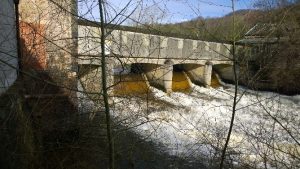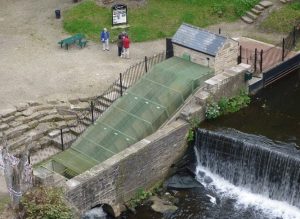
November 9, 2021, by lzzeb
RE: Power the Valley
A blog by Ian Jackson
In 2010, I knew a little about climate change as Chief Engineer in a multinational packaging manufacturer, responsible for our Climate Change Agreement, but I didn’t start to understand the significance and urgency of its impacts until I discovered Transition Belper (TB), a local sustainability community group, and read Rob Hopkins’ (@robintransition) Transition Handbook, 2008.
Belper, my hometown, was at the heart of the industrial revolution, with its water-powered Cotton Mills being inscribed as part of the Derwent Valley Mills World Heritage Site (DVMWHS) 20 years ago. The obvious question at my first TB meeting was, ‘are the Belper Mills producing renewable, hydroelectric power (HEP)?’. This question was the start of an interesting and challenging journey that, today, sees me starting my second year of PhD research with the University of Nottingham, and watching world leaders gather for COP26 in Glasgow.
In answering the ‘are the Belper Mills producing HEP’ question (and the answer is yes, 535 houses worth of typical electricity usage!), I met key stakeholders who led me down two parallel paths: researching the use of waterpower by the local mill owners (the Strutts) since the 1770s and identifying a potential community owned HEP opportunity on the river Derwent, the old wireworks in Ambergate, Derbyshire.
Waterpower has been important to our country’s development for over a thousand years but, despite being acknowledged as the only renewable energy in the 1980s, it isn’t part of today’s Net Zero plans recently published by the UK Government. Developing HEP today is complex but during my research of the historic use of waterpower, I have discovered similar challenges faced, such as flooding, fisheries and canal water abstraction, that were overcome by the early industrialists in the DVMWHS.

Ambergate Weir, HEP removed in the 1960s and now a potential site for a community owned HEP project. Photo taken by Ian Jackson.
In an ideal world the community HEP project would now be operating, with others under development and the community benefits from the project improving our local sustainability and resilience. Unfortunately, however, this project, along with similar projects throughout England and Wales, halted in 2018 with the ending of government subsidies and, for HEP specifically, more challenging environmental and planning regulations.
My research is now focussed on six case studies within the Derbyshire Derwent catchment, learning from the 18th and 19th centuries to understand how challenges were overcome and disputes resolved, enabling the successful development and use of waterpower during that period. Since the development of HEP at the end of the 19th century, there have been different challenges (e.g. coal fired power stations) and enablers (e.g. renewable subsidies), leaving us in a situation where only half of the sites generating electricity 100 years ago are operating today (most being reinstated since 1990).
My aim is to develop a collaborative and sustainable approach to future HEP development, supporting climate change mitigation, improving river ecology, protecting and promoting our heritage, whilst using our water resources effectively. For the second time in history Derbyshire’s communities have the opportunity to harness the renewable energy available in their valleys to lead an industrial revolution, the green industrial revolution.
No comments yet, fill out a comment to be the first


Leave a Reply